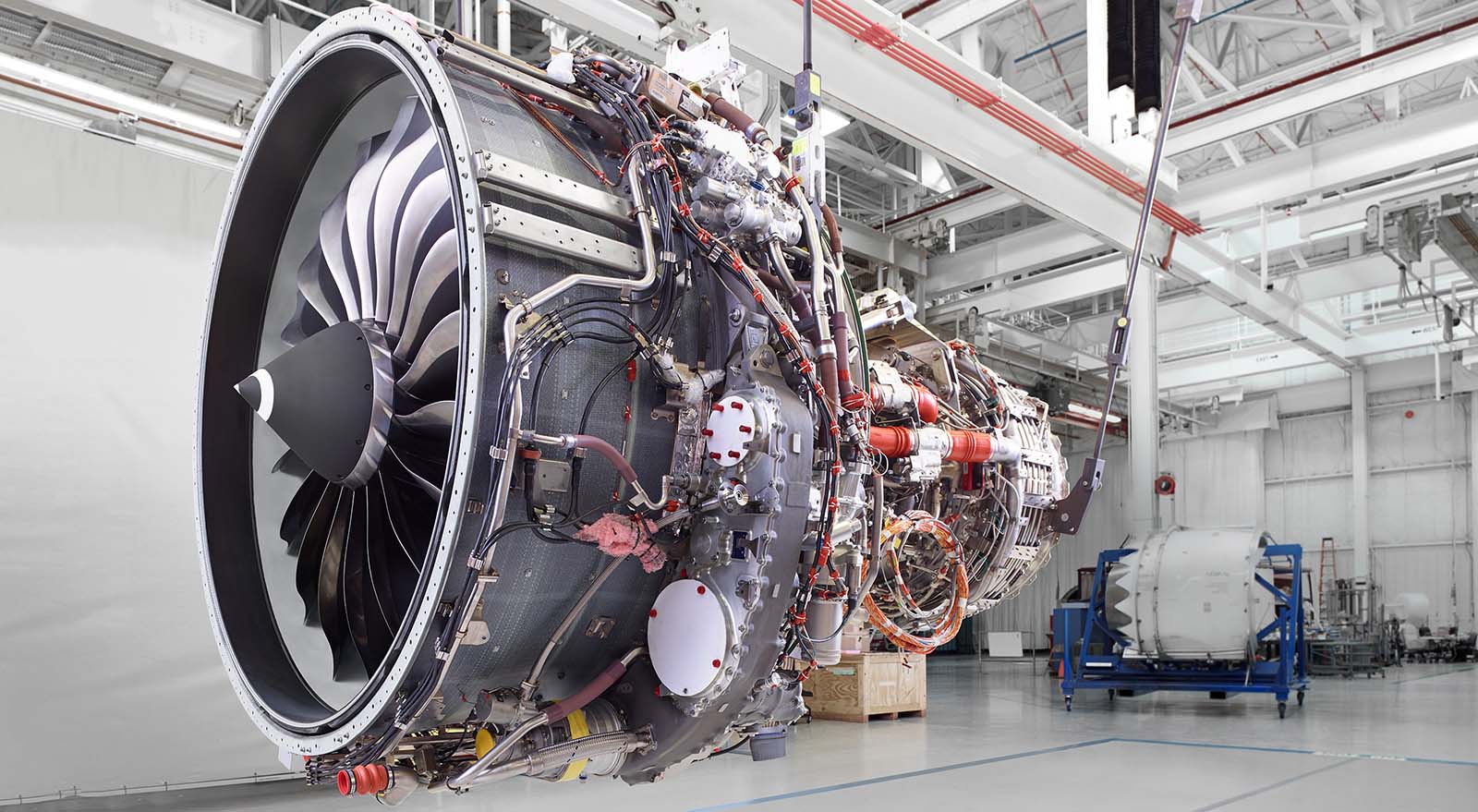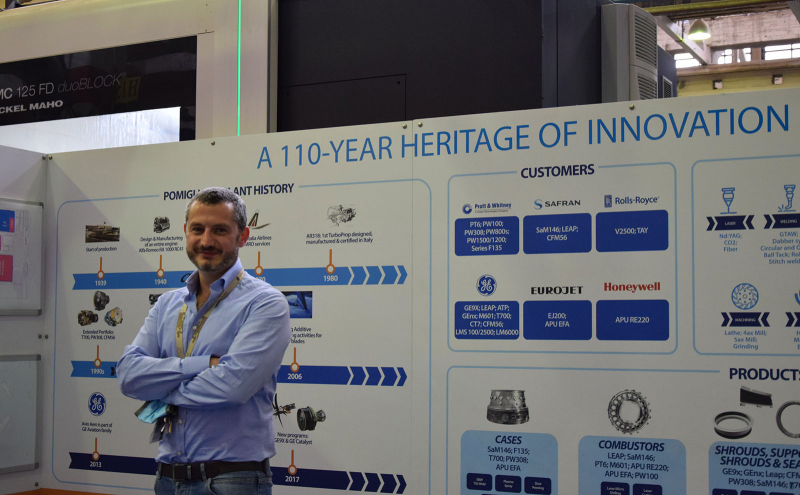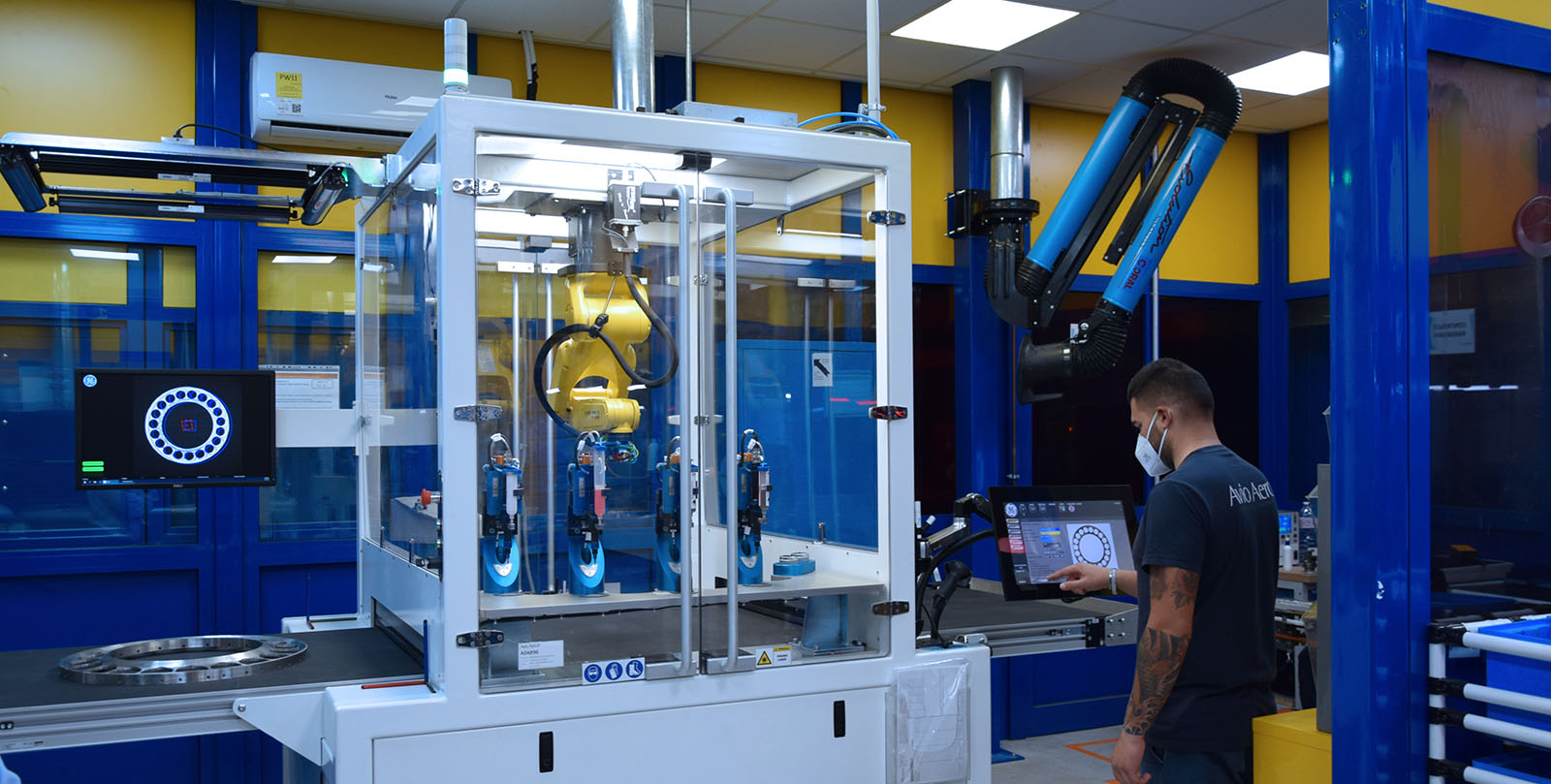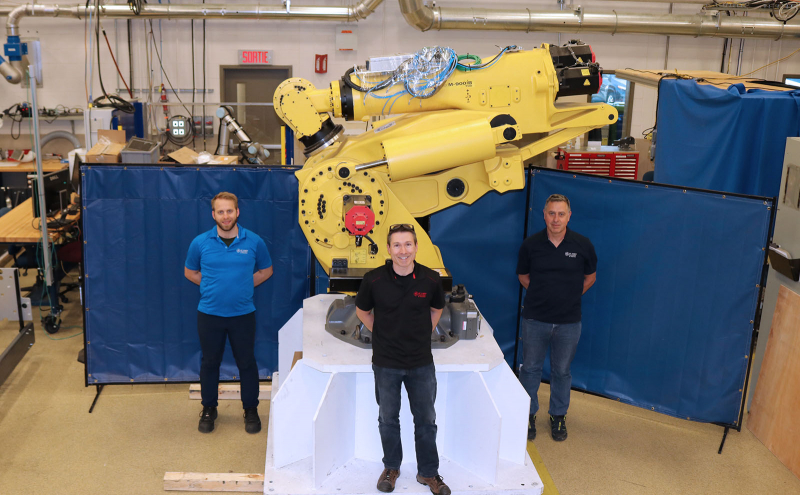Invent
From collaboration to automation
The digital technologies that improve the processes for the LEAP engine combustors at Pomigliano are the result of a global collaboration fostered by the Lean culture.
May 2021
“I think that today, in 2021, we have come to a point where it is becoming increasingly more important to maintain a steady pace of technological progress which brings benefits to both the end product and the customer, finally also advancing and expanding professional skills," said Francesco Petriccione, Special Processes Operator at Avio Aero in Pomigliano (Naples).
The unyielding momentum of Lean culture which has been sweeping through Avio Aero factories where, for years, entire modules and components of aircraft engines for civil and military aircraft have been manufactured, continues to facilitate the transformation of production processes and, even more importantly, the approach to everyday problems and activities through a different, evolved mindset.
In this case, the Lean approach has made it possible to optimize and fine-tune one of the key production processes carried out at the Pomigliano d'Arco facility (the second largest Avio Aero facility in Italy), once again, by means of digitalized automation. More specifically, this involves a process that takes place within the Combustor product center, in the departments where the combustion chamber is produced for the LEAP 1A and 1B engines.
Despite the abrupt and unprecedented slowdown imposed by the Covid-19 pandemic, this engine for medium-long range civil aircraft, successor to the highly renowned and enormously popular CFM56, continues to maintain its title as best-seller thanks to the numerous airlines and operators who have selected it and continue to support it. At the very beginning of May, in fact, LEAP exceeded the threshold of 10 million flight hours, foreshadowing a resumption of the extremely high production volumes when it was first unveiled to the market at its debut.
“The innovation of the brazing preparation process responded to a need, but it also provided us with an opportunity on a LEAP product,” explained Francesco Vito, Manufacturing Engineer at the Combustor center in Pomigliano, and who works with Petriccione. “The brazing process is used to join several metal components of the combustor through the application of special brazing compounds and treatment in a high vacuum furnace. Today, the preparation operations have moved from a method which was purely manual to a digital method, ensuring greater stability and even higher quality. Not to mention, evolving the way we work.”
The product which Vito refers to, and which has seen its own production process totally revamped, is the LEAP combustion chamber dome: a circular component with a truly fascinating design which is assembled along with the other complementary parts of the combustion chamber produced in Pomigliano, namely the inner and outer liner.
Professional evolution, on the other hand, is also taking place on the journey that will lead Vito to becoming one of the Controlled Title Holders (CTH) for the brazing process: “the journey together with Francesco, which also includes knowledge transfer in the disciplines of Automation and Robotics, lasted twenty-four months and incorporated the typical phases of observation, practice and partnership. Combining our different skills and experience in brazing and automation was the key to achieving the result,” explained Alberto Ghiazza, CTH of Avio Aero at Rivalta di Torino.
Today, the preparation operations have moved from a method which was purely manual to a digital method, ensuring greater stability and even higher quality. Not to mention, evolving the way we work
Ghiazza, who has been in the aeronautics sector since 2014, previously worked for more than a decade in the automotive industry where he accumulated considerable experience with automation technologies, therefore his field of specialization as CTH is in Automation & Robotics. As part of his role, Ghiazza is a point of reference in the field of automated processes for Avio Aero factories and, for this reason, he is connected to GE Aviation teams around the world who have the same specialization. "The Canadian team I’m used to work with, is capable of creating systems and enabling technologies that do not exist on the market," said Ghiazza.
"The new digital machine, which we adopted as a result of the collaboration with GE Aviation Bromont (Canada), has improved the lead time for the dome, and more specifically, aligning it with the times of the other components we manufacture here, as well as facilitating the planning of the work of the operators themselves," added Francesco Vito.
In this technological context, Operators control and reprogram a highly advanced machine with which they interface through LED screens, and they also manage first maintenance activities. In 2014, at the age of 19, Francesco Petriccione began his career at Avio Aero as a specialized operator in the Rotating Components center at Rivalta and, in 2019, he followed his then Manufacturing Technologies manager to Pomigliano - marking a return to his home region - as an operator in the departments where the LEAP combustors are manufactured.
“Moving from manual applications using precision tools to programming a machine with a whole host of commands is compelling,” said Petriccione looking back on the transformation he helped to implement. “It's definitely less stressful for a robot to repeat millimeter movements to perfection, and for me - after a few months of use and specialized training - it's inspiring to go beyond manual labor, and continue the journey of learning all the potential, features and options of digital, as well as sharing and interacting with Canadian colleagues!”
GE Aviation's Canadian site in Bromont is not only a highly specialized center for turbine airfoils manufacturing employing almost 500 personnel and more than 200 robots and automated machines in place. Since 2011, it has also been home to the Global Automation & Robotics R&D Centre (GARC) where approximately 25 highly skilled engineers and technicians work. GARC's mission is to develop unique digital and automated solutions for GE Aviation factories around the world.
“Our team works on a pretty wide range of technologies,” said Ghislain Dépault, Project Manager at GARC in Bromont, who often works with Ghiazza and oversaw the project for the Naples Combustor center. “In addition to numerous mechanical operations and processes, inspection of engine parts and assembly, we offer consulting services while pursuing our mission to GE Aviation production sites. Relying, as well, on special skills in the field of robotics as well as artificial intelligence and vision.”
Dépault visited Pomigliano last March and worked alongside Avio Aero colleagues on the installation and start-up of this new automation project. The technological solutions implemented through an exchange of knowledge and skills have opened up a path to an increase in standardization, as well as potential, so much so that in Pomigliano they are certain that other production lines can evolve in a similar fashion.
“Such experiences clearly enrich your human side as well,” said Francesco Vito commenting the teamwork with the Canadians peers. “Working together on problem solving allows you to expand on the methods and share approaches. This made it possible for us to achieve results within the best possible times and with no major hiccups, and also consolidated the collaborative relationship achieved through mutual willingness, understanding of the local reality. And this is crucial to moving forward."
We've always enjoyed working with people from different cultures, adopting the best practices and learning some phrases in the local language...we really appreciated the focus the Pomigliano team applies to problem solving
On the other hand, the feeling echoed by the Canadians which wove its way through this collaboration revolves around the key to success in human interactions: diversity. “We've always enjoyed working with people from different cultures,” said Ghislain Dépault, “adopting the best practices and learning some phrases in the local language. We really appreciated the focus the Pomigliano team applies to problem solving. Despite the pandemic, they were highly proactive in providing the information required to move the project forward without any delays. The real key to a successful automation project is collaboration, and we discovered that key together as we become... amici!”








